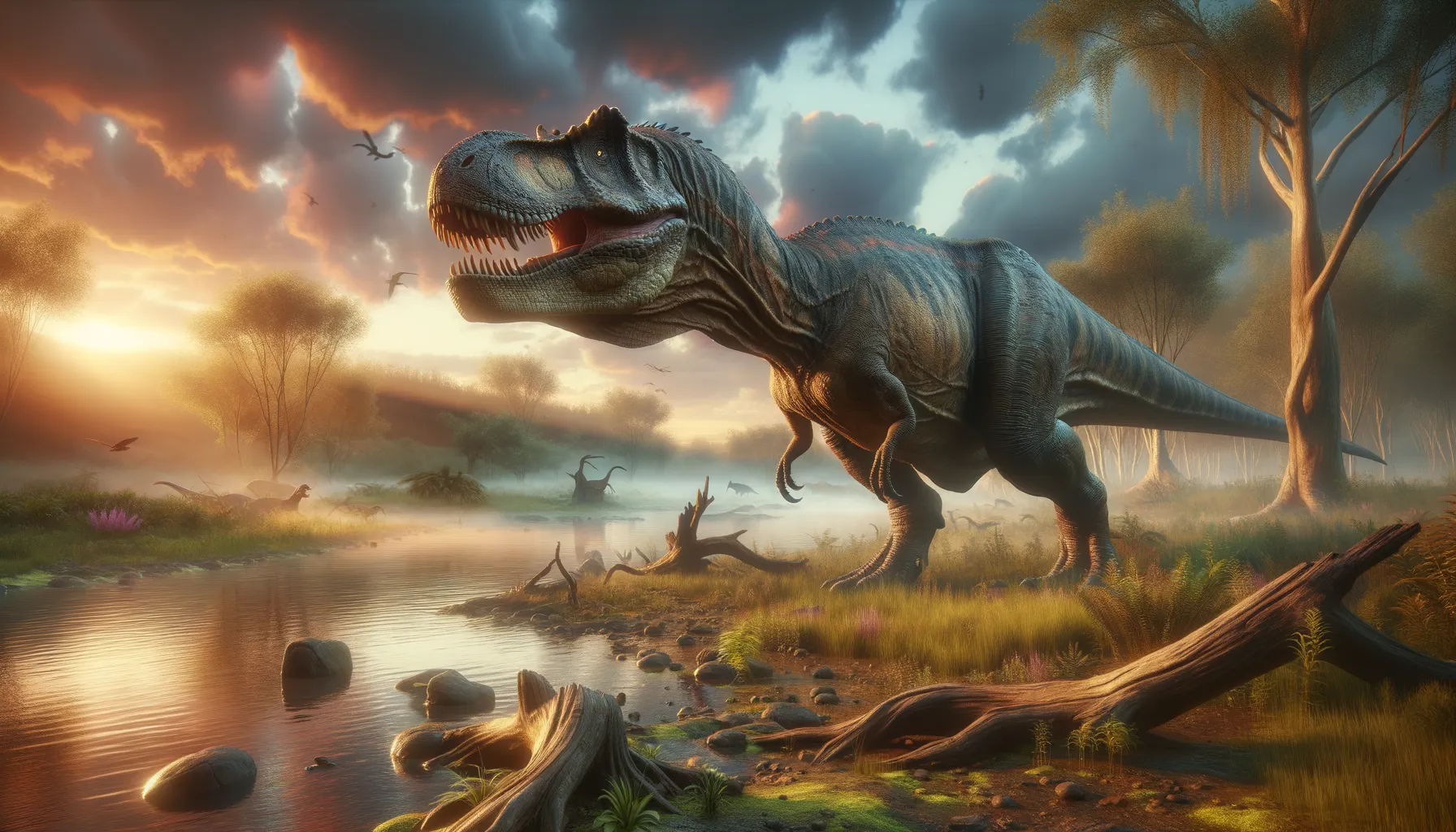
Appalachiosaurus
The stealthy predator of ancient Appalachia.
Period
Cretaceous
Length
Approximately 7 to 8 meters long.
Height
About 2 to 3 meters at the hip.
Weight
Estimated at around 2,000 kilograms.
Appalachiosaurus was a theropod dinosaur that roamed the eastern parts of North America during the Late Cretaceous period. This carnivorous dinosaur is known primarily from a single juvenile skeleton, indicating a bipedal, predatory lifestyle. Its discovery has provided valuable insights into the diversity of theropods in Appalachia, an ancient landmass. Fossils suggest it shared similarities with other tyrannosaurs, exhibiting a powerful build and a keen sense of smell.
Diet
Appalachiosaurus was a carnivore, preying on a variety of contemporaneous smaller dinosaurs and possibly scavenging carrion. Its teeth were sharp and serrated, perfect for slicing through flesh, indicating a diet primarily of meat.
Hunting
As a predator, it likely used its speed and agility to ambush prey. Its keen sense of smell and good eyesight would have made it an effective hunter in its ecosystem.
Environmental challenges
Living in the Late Cretaceous, Appalachiosaurus faced a dynamic world with fluctuating climates and occasional competition for resources. The isolation of Appalachia, due to high sea levels creating an island environment, might have influenced its evolution by limiting interactions with theropods from western North America. This isolation also provided unique opportunities and challenges, as it might have needed to adapt to specific prey and vegetation types found only in its region.
Speed
Moderate, likely similar to other mid-sized theropods.
Lifespan
Possibly 15 to 25 years, like similar theropods.
First discovery
Identified from fossils found in Alabama in 1982.
Fun Facts
- Appalachiosaurus was a theropod dinosaur that lived around 77 million years ago during the Late Cretaceous period.
- Its name means 'Appalachian Lizard', because it was found in the region that is now the southeastern United States, which was part of an ancient landmass called Appalachia.
- Appalachiosaurus is a close relative of the more famous Tyrannosaurus rex, although it was a bit smaller, reaching about 20 feet (6 meters) in length.
- Fossils of Appalachiosaurus have mostly been found in Alabama, providing important insights into the diversity of dinosaurs in eastern North America.
- Unlike T. rex, which had relatively tiny arms, the forelimbs of Appalachiosaurus were better proportioned, suggesting they might have been more useful for grasping prey.
- Scientists believe that Appalachiosaurus was likely a carnivore, using its sharp teeth to hunt other dinosaurs and possibly even smaller animals in its environment.
- Despite its fearsome appearance, Appalachiosaurus lived in a swampy, forested region that might have hosted a variety of other intriguing prehistoric creatures.
Growth and Development
Juvenile fossils indicate that Appalachiosaurus grew rapidly, similar to other theropods. Its growth patterns suggest it reached near full size in only a few years, which was crucial for survival. This rapid growth helped it escape vulnerable stages of life quicker and compete effectively within its ecological niche.
Habitat
Appalachiosaurus lived in humid, forested environments with abundant water sources, typical of the Cretaceous in present-day southeastern United States. The area was filled with lush vegetation and housed a variety of dinosaurs. These dense forests required the dinosaur to maintain agility for navigating and hunting.
Interaction with other species
It likely competed with other predators for similar prey, including smaller theropods, which required strategic hunting techniques. Its interactions with herbivorous dinosaurs were likely limited to hunting them, as it would have had little reason for other contact. Scavenging opportunities might have brought it into contact with smaller scavengers or other predators vying for the same meal.
Natural lifespan
Potentially living around 20 years in the wild.
Reproduction
The dinosaur likely laid eggs in clutches, with females possibly caring for nests to some degree. Hatchlings were precocial, meaning they were somewhat independent soon after birth, which was advantageous for their survival.
Social behaviour
Appalachiosaurus may have been a solitary hunter, although it is possible that young individuals stayed in groups for protection. Social interactions beyond hunting and mating are speculative due to limited fossil evidence.
Fossil locations
Fossils primarily found in Alabama have illuminated its existence. The southeastern United States is key to understanding its range and environmental adaptations. These discoveries have been instrumental in painting a clearer picture of theropod diversity in ancient Appalachia.
